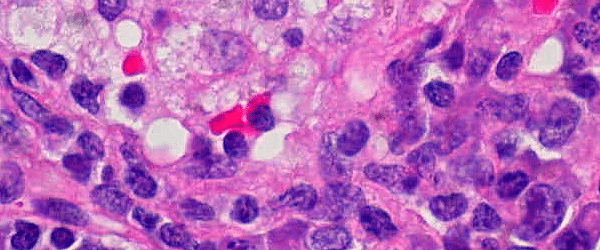Immunofluorescence staining is a popular and extremely powerful detection method. However, achieving publication-quality immunofluorescence or fluorescent antibody staining can get tricky. It’s therefore important to ensure you have the right controls for immunofluorescence.
In my experience, the first step towards getting reproducible and quality staining is knowing that your immunofluorescence staining is specific. This article will allow you to decide on the right controls for your experiment and use them to decide if your staining has worked or not.
Why Do We Need Controls for Immunofluorescence?
In immunofluorescence, colorful images are so compelling that it is hard to imagine the information they contain could be wrong. However, experienced scientists know that to trust staining, you need controls showing it is specific.
For example, to know that staining is real and not due to autofluorescence or non-specific staining, you need to include no primary antibody or isotype controls in your experiment. Including controls makes your data interpretation easier and helps narrow down the issue for troubleshooting, for example, when you get no signal.
What Can Different Controls for Immunofluorescence Tell You?
The type of controls for immunofluorescence you use will depend on the purpose of your immunofluorescence experiment. For example, if you are trying to verify the knockout cell lines, it is important to establish the specificity of the antibody.
Some of the most commonly used controls include a control to show the specific binding of an antibody (omitting the primary control), a positive control, and omitting the secondary antibody control to understand the autofluorescence background signal.
I have listed five controls, and each of them gives you different information to validate your IF staining.
1. Positive Control
This is one control for immunofluorescence you should always use in your experiments, as it’s crucial to determine whether or not something went wrong during your staining. A positive control can be any tissue or cells where the protein of interest is known to be expressed in abundance (or where you have overexpressed the protein through transfection).
If you do not see staining in your positive control, you know that something went wrong with the staining protocol.
2. Omitting the Primary Antibody Control
Incubating the sample with antibody dilution buffer without the primary antibody will reveal if the observed signal is due to the non-specific binding of the secondary antibody in the tissue or cell sample.
Sometimes, secondary antibodies form aggregates and can be seen as debris in the sample. This can happen due to improper storage conditions. Therefore, always store your antibodies as specified by the manufacturer. And ensure you store them in small aliquots to avoid degradation from frequent freeze-thaw cycles.
Enquire with the vendor to determine if your secondary antibodies are pre-absorbed. Pre-adsorption is an additional processing step where the secondary antibodies are passed through a column containing immobilized serum proteins from potentially cross-reactive species.
Using pre-adsorbed secondary antibodies reduces the risk of cross-reactivity with non-specific targets.
3. Absorption Control
This is the control where you incubate your sample with an immune-depleted primary antibody. It demonstrates the specificity of your primary antibody, and you should see no signal from the immune-depleted primary antibody.
Immune-depleted antibodies may be produced by overnight incubation of the antibody at 4°C with an excess of the immunogen.
Although highly recommended, this control is not as popular due to limitations in obtaining purified antigens/immunogens. This control is more reliable when the immunogen is a peptide rather than a protein.
4. Isotype Control
Incubation of the sample with a non-immune antibody of the same isotype (for example, IgG1, IgG2A, IgM) and at the same concentration as your primary antibody. This control checks that non-specific interactions of the primary antibody do not cause the observed staining.
Any background staining you observe with this control should be minimal and distinct from your specific staining. This control is useful when working with monoclonal primary antibodies.
5. Omitting the Secondary Antibody Control
Samples like brain, lungs, and colon cells (those rich in elastin, collagen, and lipofuscin) tend to be high in autofluorescence. No secondary antibody controls help to determine if the observed fluorescence is coming from background autofluorescence.
If you find that you are getting autofluorescence, don’t worry—there are some things you can do to reduce it.
Keep Good Records
Always keep a detailed record to ensure consistent performance, as any variation will alter the reproducibility of staining.
It sounds obvious, but immunofluorescence staining is a long process with many steps. It is crucial to optimize each step of the protocol before you decide to generate data from your sample material.
Immunofluorescence Controls Summarized
Like any other experiment, using the right controls for immunofluorescence can save you a lot of work and reagents by allowing you to troubleshoot the source of the problem. Through careful antibody selection and staining protocol, it is possible to generate tons of useful data.
So now you know what controls you can use to troubleshoot, validate, and improve your data to get publication-quality results!
Struggling with unreliable results from your immunofluorescence? Download our immunofluorescence troubleshooting guide poster—it explains the controls you need.
Want to know more about histology and immunofluorescence? Visit the Bitesize Bio Histology Hub for tips and tricks for all your histology experiments.
Originally published October 2019. Revised and updated February 2023.






